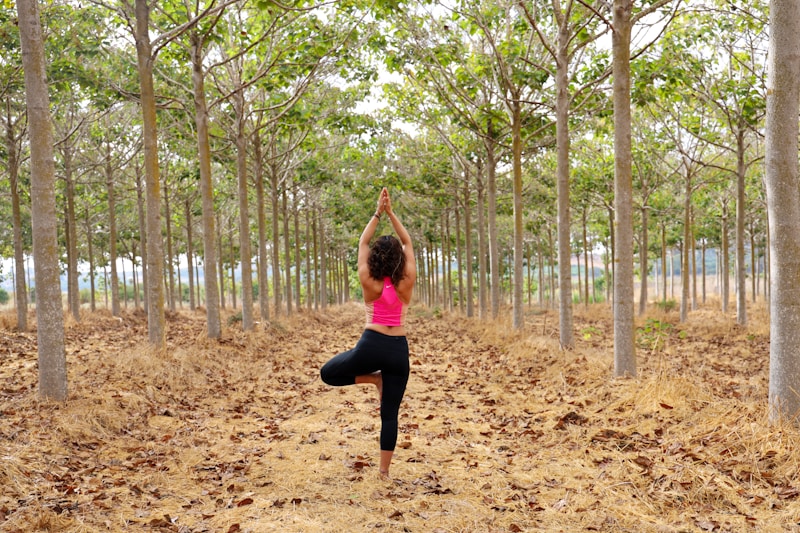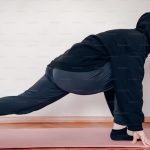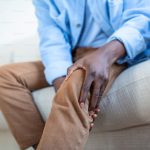As yogis we are probably more aware of our feet than many people. We spend a lot of time grounding through them. But have you ever thought about the bits of the foot that don’t touch the floor? Those are the arches of your foot and, not only are they fascinating, but they can really help your practice. Let me introduce you to them in all their glory.
Anatomy
A human foot is made up of twenty six bones, thirty three joints, one hundred and seven ligaments, nineteen muscles and a few tendons. It is a real marvel of bioengineering! Designed to be flexible enough to adapt to uneven surfaces AND able to lock into a strong, rigid lever to propel us forwards when walking. But how? The secret is the way it is built – let me explain.
The foot bones are arranged in a series of arches with the ones at either end of the arches being closer to the ground than those in middle. Just like the arches of a bridge. And, just like the bricks of a bridge, the bones of the foot lock more tightly together and the structure actually gets stronger when under load (i.e., when we stand on the foot).
Another strength of the arches of the foot are the ligaments that run from one side to the other, linking the ends of the ‘bridge’. These tighten and prevent the arch from flattening as we load the foot.
Supporting stirrup
Of the nineteen muscles of the foot, some are small enough to be completely within the foot, for example the interosseii and lumbrical muscles. While others are long and have their muscles in the lower leg with only their tendons in the foot – toe flexors and extensors. Two of these longer muscles actually make a stirrup under the middle of the foot to support the arches and are incredibly important to how our foot works.
The first half of the stirrup arrangement is peroneus longus. This muscle is on the outside of the lower leg and becomes tendon above the ankle. The tendon runs down behind the outside ankle bone before taking a dramatic change of direction to dive under the middle of the foot. Then it passes through the sole of the foot to attach on to the underside of the bones on the inside, or medial, arch of the foot.
The other side of the stirrup is tibialis posterior. This muscle starts in the calf and its tendon runs down behind the inner ankle bone and also attaches to the bones of the medial arch.
Peroneus longus and tibialis posterior working together also supports the arches of the foot. Their action is most clearly seen in that medial arch where they attach. When tibialis posterior works harder the foot turns in, or supinates, and the medial arch gets higher. When peroneus longus works harder the foot turns outwards, or pronates, and the medial arch flattens. Try rolling your feet in and out in standing to see this happening.
Fabulous function
It is a rule of nature that no two people are built the same. So, no two people will ever have exactly the same shaped feet. Look around your yoga class – you will see low medial arches and high ones (and probably everything in between).
Now watch someone walk in bare feet. Does the medial arch flatten as they walk? Or does it lift? Well the answer should be yes to both. Pronation, or flattening of the medial arch, and supination, lifting of the arch, are both normal movements of the foot in walking. The foot hits the ground heel first and rolls into pronation as weight comes on to the foot. It then rolls out into supination to allow the heel to lift and a step to be taken. The heel hits the ground in supination on the next step, then rolls into pronation, and into supination… and so on… over and over again as we walk.
Much has been made in recent years of the dangers of pronation, particularly excess pronation, and it’s influence on a multitude of common musculoskeletal aches and pains. But how is this relevant to yoga? And can yoga help?
How yoga can help
Yoga does not really lend itself to the approach of corrective footwear or orthotics but it does have a lot to offer in the management of foot problems and biomechanical aches and pains.
Simply walking around bare foot will strengthen the small muscles of your feet. Grounding through your whole foot in tadasāna is also great working for those little muscles. This alone may help to get rid of foot pain for some people. Try taking a little extra time to press through the toes and ball of foot as well as the heel before you start your sun salutes.
If you have a tendency towards flat feet, or have been told you over pronate, then adding tibialis posterior action to your standing poses is worth considering too. This may strengthen the muscle enough for it to work better at supporting your medial arch when you are walking around. This may reduce your risk of biomechanical problems associated with over pronation and help to get rid of pain if you already have it.
Active arches
As well as helping aches and pains, activating tibialis posterior is a great way to increase activation of the legs in standing poses. You’ll gain stronger (maybe more toned) legs, feel greater stability in standing poses and the elusive spiraling of the legs may be easier to access. And it will feel good! There is SO much to gain – here’s how to get the right action
- Ground down through the base of the big toe (front of the arch)
- Ground down through the inner edge of the heel (back of the arch)
- Gently lift middle of arch up and out a little and feel the inner ankle and lower leg activate
- Then bring your attention back to the big toe and press through it a little more – it will SO want to lift up as the arch lifts – don’t let it!
Don’t expect a lot of movement in the arch. It is a subtle action but that doesn’t matter – simply activating the right muscles is pure gold. Try it in padottanāsana (wide leg forward fold), trikonasāna (triangle) or virabhadrasāna (warrior) and see how it changes the energetics of each pose.
The bottom line…
Our feet are literally our foundations – for yoga and for life. Paying attention to how we use them to build our poses will reap rewards in terms of deepening yoga practice. And may just keep those other joint niggles at bay too. Seems like a great result for a little effort, doesn’t it?













